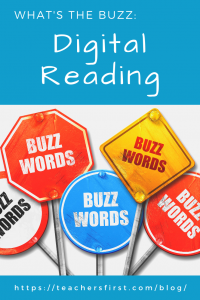 Education has moved forward a bit recently. We’ve learned a lot about using technology in the classroom (and remotely) and our readiness to provide instruction in many non-traditional formats. A lot has been said about teaching reading and reading online. But the conversations about reading haven’t extended to teaching digital reading. Digital reading and traditional reading are very different, so it is vital to draw the distinction and instruct students on how to accomplish both.
Education has moved forward a bit recently. We’ve learned a lot about using technology in the classroom (and remotely) and our readiness to provide instruction in many non-traditional formats. A lot has been said about teaching reading and reading online. But the conversations about reading haven’t extended to teaching digital reading. Digital reading and traditional reading are very different, so it is vital to draw the distinction and instruct students on how to accomplish both.
Digital reading – or reading online — is both non-linear and cyclical. When reading on the internet, people typically don’t start reading at “the beginning” and continue reading until “the end.” Unless the intent is to go to a specific website and read a particular article, digital reading involves a process that takes a search across several websites. When reading the internet, people are typically looking for information, not getting engrossed in a good story.
The digital reading cycle begins with a search – perhaps asking a search engine question and looking at the results offered and making an educated guess about which website to investigate. Once at the site, a quick skimming of the information helps us decide if the text found on the site will help inform the search. If the site has desirable material, you settle in to read. If it doesn’t, you return to the search results. That’s the first cycle.
If you stayed at the website, you might take some notes or add the site to a list of those you intend to revisit. You’ll want to check the site to make sure that it is credible. Sometimes the text will point you in the direction of another website. Other times you’ll go back to your search results. These steps present an additional cycle.
Searching, scanning, and organizing information as you go is certainly not how we read books. The skillset is different, and if we want our students to be able to seek out and find information purposefully, we’ll need to teach these skills. Kathleen Morris, a primary teacher in Australia, wrote a post that is an excellent place to learn how to introduce these skills. You could also attend our OK2Ask session on digital reading tonight or plan to watch the archive.
Have you been thinking about the differences between traditional reading and digital reading? Do you have any tips to share on how to introduce these skills to students? Let us know in the chat!

